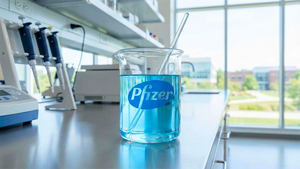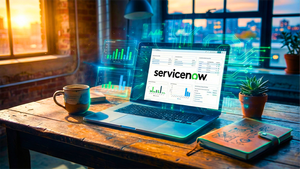
Silver is currently experiencing a remarkable surge, reaching multi-year highs and significantly outperforming other commodities, driven by a powerful confluence of a structural supply deficit and burgeoning industrial demand from the burgeoning solar energy and electric vehicle (EV) sectors. This dual role, as both a precious metal and a critical industrial commodity, is fundamentally reshaping its market dynamics and signaling a new era for the "poor man's gold." The metal's impressive ascent, with some reports indicating a 45% year-to-date increase in 2025 and trading above $42 per ounce, is not merely speculative but rooted in robust underlying fundamentals, creating both opportunities and challenges across global industries.
This sustained outperformance has immediate and far-reaching implications. Market analysts project silver prices could average between $31-$34 per ounce in 2025, with potential to spike above $38 and even reach $80 per ounce by 2030. Physical silver inventories, particularly those on COMEX, have seen significant drawdowns, declining over 70% from their 2020 peaks, signaling a tightening physical market. This scarcity, coupled with an inelastic supply side—where new mine production takes years to develop and most silver is a byproduct of other metals—is creating substantial premiums in physical markets and impacting manufacturing costs, notably for solar panel producers where silver now constitutes 8-12% of production costs.
The Perfect Storm: Supply Constraints Meet Green Revolution Demand
The current surge in silver prices is a direct consequence of a persistent structural supply deficit that has plagued the market for five to seven consecutive years. This deficit has resulted in a cumulative shortfall estimated at nearly 800 million ounces between 2021 and 2025, equivalent to almost a full year of global silver production. Annual deficits have consistently ranged from 100-200 million ounces, with 2023 seeing a deficit of 142-230 million ounces, and 2024 projected to reach between 148.9 and 265 million ounces. This imbalance is exacerbated by declining global mine production, which has seen a 0.9% compound annual growth rate contraction since 2020 and a 7% decline from 2016 peak levels, alongside deteriorating ore grades and a decade of underinvestment in exploration. The long development timelines of 7-10 years for new mining projects, coupled with rising production costs and stricter environmental regulations, further constrain supply growth.
On the demand side, industrial applications now represent a dominant force, accounting for 50-64% of total silver consumption. The clean energy transition is at the heart of this demand surge. The solar energy (Photovoltaics - PV) industry stands out as the fastest-growing silver consumption category, responsible for 19% of all worldwide silver demand in 2024. Silver usage in solar panel production has soared from 60 million ounces in 2015 to an anticipated 232 million ounces in 2024, with projections indicating a requirement of 380 million ounces annually by 2030 as global solar capacity triples. Notably, high-efficiency solar cells, such as TOPCon and Heterojunction, demand 30-70% more silver per watt, potentially pushing the PV industry's share to 29-41% of projected silver supply by 2030.
The electric vehicle (EV) revolution is another pivotal driver. Modern EVs incorporate significantly more silver—approximately 25-50 grams per vehicle compared to 15-28 grams in internal combustion engine (ICE) vehicles. Silver is critical in numerous EV components, including battery management systems, power electronics, electric motors, and autonomous driving sensors, owing to its unparalleled electrical and thermal conductivity. With global EV sales projected to exceed 30 million units by 2030, silver usage in EVs is expected to increase by 40% over the next decade. Beyond solar and EVs, growing demand from electronics manufacturing (5G networks, AI hardware, IoT devices) and the healthcare sector further intensifies the overall industrial appetite for silver, cementing its role as an indispensable metal in the modern economy.
Shifting Fortunes: Winners and Losers in the Silver Rally
The dramatic shift in silver's supply-demand dynamics is creating clear winners and presenting significant challenges for others across the financial and industrial landscapes.
Silver Mining Companies: The Clear Beneficiaries
The most direct beneficiaries are silver mining companies, which are experiencing increased revenues, expanded profit margins, and improved cash flow. Their operational leverage allows rising silver prices to flow directly to their bottom line, facilitating debt reduction and potentially increasing dividends. Key players poised to win include:
- Pan American Silver Corp. (NASDAQ: PAAS): As one of the world's largest silver-focused companies, its extensive portfolio of mines and substantial reserves position it to capitalize significantly on price increases.
- First Majestic Silver Corp. (NYSE: AG): With a direct focus on silver production from its Mexican mines, First Majestic is well-situated to outperform silver price increases.
- Hecla Mining Company (NYSE: HL): A major silver producer, Hecla benefits from enhanced profitability from its silver-centric operations.
- Coeur Mining, Inc. (NYSE: CDE): This company, with its combined silver and gold assets, sees its financial performance bolstered by the rising value of silver.
- Wheaton Precious Metals Corp. (NYSE: WPM): As a streaming company, Wheaton benefits without direct mining costs, as it purchases silver at pre-set prices and sells at rising market rates, widening its margins. Other companies like Endeavour Silver Corporation (NYSE: EXK), Fortuna Silver Mines Inc. (NYSE: FSM), and Silvercorp Metals (TSX: SVM) are also expected to see significant gains, though they must also navigate rising production costs.
Solar Panel and Electric Vehicle Manufacturers: Navigating Cost Headwinds
Conversely, industries heavily reliant on silver as a raw material face significant cost pressures. Solar panel manufacturers, where silver accounts for a notable portion of production costs, and EV producers, who use silver in numerous critical components, are now grappling with higher input expenses. These industries are indirect losers or, more accurately, challenged sectors.
- Solar Panel Manufacturers (e.g., JinkoSolar Holding Co., Ltd., LONGi Green Energy Technology Co., Ltd.): Giants in solar panel production, such as JinkoSolar and LONGi, face reduced profit margins due to the increased cost of silver paste, a crucial component in photovoltaic cells. These companies are intensely focused on research and development (R&D) to implement silver-reduction technologies, such as laser-assisted sintering and 0BB (zero busbar) designs, to mitigate these rising costs. First Solar (NASDAQ: FSLR), which uses cadmium telluride thin-film technology (non-silver based), might gain a competitive advantage due to its stable production costs.
- Electric Vehicle Producers (e.g., Tesla (NASDAQ: TSLA), BYD): Market leaders like Tesla and major global producers such as BYD are significant consumers of silver for electrical components, battery management systems, and charging infrastructure. Rising silver prices directly increase their manufacturing costs, potentially impacting profitability or necessitating price adjustments for vehicles. Newer or smaller players like Lucid Group Inc (NASDAQ: LCID) or Rivian (NASDAQ: RIVN) may find absorbing these costs more challenging. These companies are exploring R&D to optimize silver usage, develop efficient recycling programs for end-of-life components, and manage supply chain resilience, though silver's superior conductivity makes full substitution difficult.
A Fundamental Shift: Industry Impact and Broader Implications
The structural silver supply deficit and soaring industrial demand represent more than just a market anomaly; they signify a fundamental repositioning of silver within the global economy. This event aligns perfectly with broader industry trends, particularly the aggressive global push for clean energy and decarbonization, transforming silver into a strategic "green metal."
Silver's indispensable role in solar PV, EVs, wind energy systems, and green hydrogen production solidifies its status as a critical material for the energy transition. Its unmatched conductivity and ductility are vital for efficient energy capture and transmission. This robust industrial demand, converging with stagnant mine supply, has led to multi-year deficits and is increasingly seen as a hallmark of a new commodity supercycle. Unlike previous cycles driven primarily by industrialization or speculative bubbles, this supercycle is underpinned by the massive material requirements of the low-carbon economy. The depletion of exchange inventories further underscores the physical tightness, suggesting a sustained upward trend.
The ripple effects are diverse. While efforts for substitution are underway (e.g., copper in some applications), silver's unique properties make a complete wholesale replacement challenging for its most critical green technology uses, ensuring demand remains high. This can create a "psychological spillover" effect on other precious metals like gold, boosting investor sentiment, particularly as the high gold-to-silver ratio (around 86:1 compared to a historical 40-60:1) suggests silver may be undervalued. The fact that 70% of silver is a byproduct of other base metals (copper, lead, zinc) means its supply is less responsive to its own price signals, creating a complex interplay where demand for silver could indirectly encourage investment in base metal mining.
Regulatory and policy implications are also emerging. The U.S. Department of Energy has designated silver as a critical mineral for supply chain security, potentially leading to government stockpiling, priority permits for mining projects, and increased investment in domestic production. Governments worldwide are driving demand through renewable energy targets and EV adoption subsidies, while also pushing for sustainable mining practices and improved recycling rates for silver from end-of-life products. These policies will shape both the supply and demand landscape for years to come.
The Road Ahead: Navigating Silver's Future Landscape
The future of the silver market is poised for continued dynamism, with both short-term volatility and a fundamentally bullish long-term trajectory. Near-term projections anticipate silver prices averaging $31-$34 per ounce for 2025, with potential spikes above $38, supported by expectations of Federal Reserve interest rate cuts, ongoing geopolitical uncertainties, and persistent industrial demand. The long-term outlook is even stronger, driven by silver's irreplaceable role in the "green economy." Analysts forecast prices potentially reaching $40-$50 per ounce by 2027-2028, with more bullish scenarios pushing towards $65 by 2028 and even $80 by 2030, contingent on the acceleration of clean energy adoption and continued supply constraints.
Strategic pivots and adaptations will be crucial for all stakeholders. Silver miners will need to significantly increase investment in exploration and development, adopting new technologies for efficiency and focusing on robust Environmental, Social, and Governance (ESG) practices to secure social license and attract capital. Industrial consumers, especially in solar and EV sectors, must prioritize supply chain security through long-term agreements, invest in R&D for silver-reduction technologies and efficient recycling systems, and potentially build inventories during periods of price weakness. Investors, on the other hand, are advised to adopt a long-term perspective, diversifying portfolios with silver as a hedge against inflation and economic uncertainty, and considering various investment avenues from physical bullion to ETFs and mining stocks.
Emerging market opportunities include growing demand from Asian economies, silver's increasing recognition as a strategic resource by governments (potentially leading to national stockpiling), and its appeal to ESG-focused investors. Challenges include cost sensitivity for industrial users, limitations on silver substitution, and geopolitical risks affecting mining operations. Potential scenarios range from a base case of continued structural deficit and moderate price growth, a bullish case of accelerated demand leading to a significant "silver squeeze" and dramatic price surges, to a bearish case where a severe global economic downturn or technological breakthroughs in substitution could lead to a price correction, though the underlying fundamental demand is likely to establish a strong price floor.
Conclusion: A Strategic Metal for a Sustainable Future
In conclusion, silver's current market outperformance is a compelling narrative driven by an undeniable structural supply deficit and an explosion in industrial demand, particularly from the critical sectors of solar energy and electric vehicles. This unique confluence of factors has solidified silver's position not merely as a precious metal but as a strategic commodity indispensable for the global transition to a low-carbon, technologically advanced future.
Moving forward, the silver market is poised for continued strength, albeit with characteristic volatility. The persistent supply-demand imbalance suggests that current price levels are not temporary but reflective of a fundamental shift in silver's economic importance. Its lasting impact will be seen in its central role in achieving global decarbonization goals and enabling advanced technologies. This makes silver a critical component in the modern industrial complex and an increasingly attractive asset for investors.
Investors should closely monitor Federal Reserve monetary policy, global inflation data, the strength of the US dollar, and key industrial demand indicators such as solar installations and EV sales. Geopolitical events and supply-side developments, including new mining projects or recycling advancements, will also play a role. Given silver's inherent volatility, a disciplined approach like dollar-cost averaging can be a prudent strategy. Ultimately, silver offers a unique blend of inflation hedge, safe-haven appeal, and leveraged exposure to the green energy revolution, making it a pivotal asset to watch in the coming months and years as the world accelerates its sustainable transformation.







